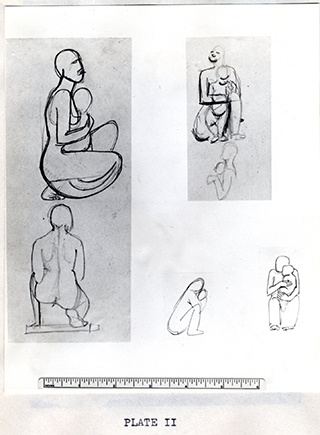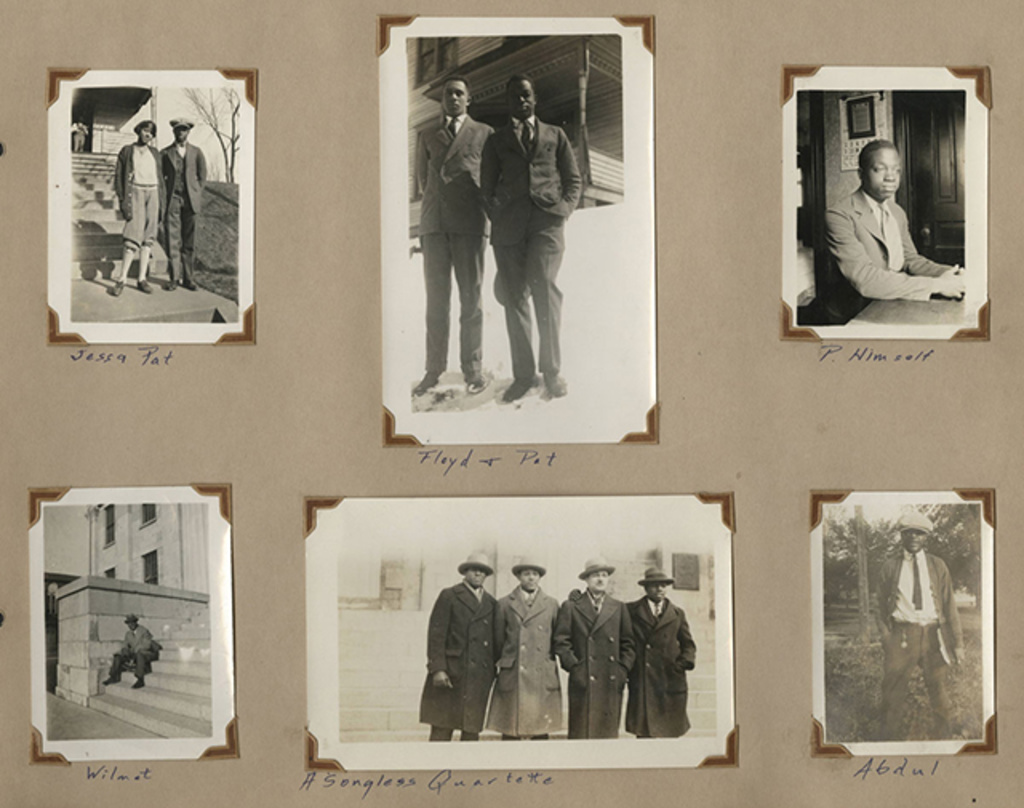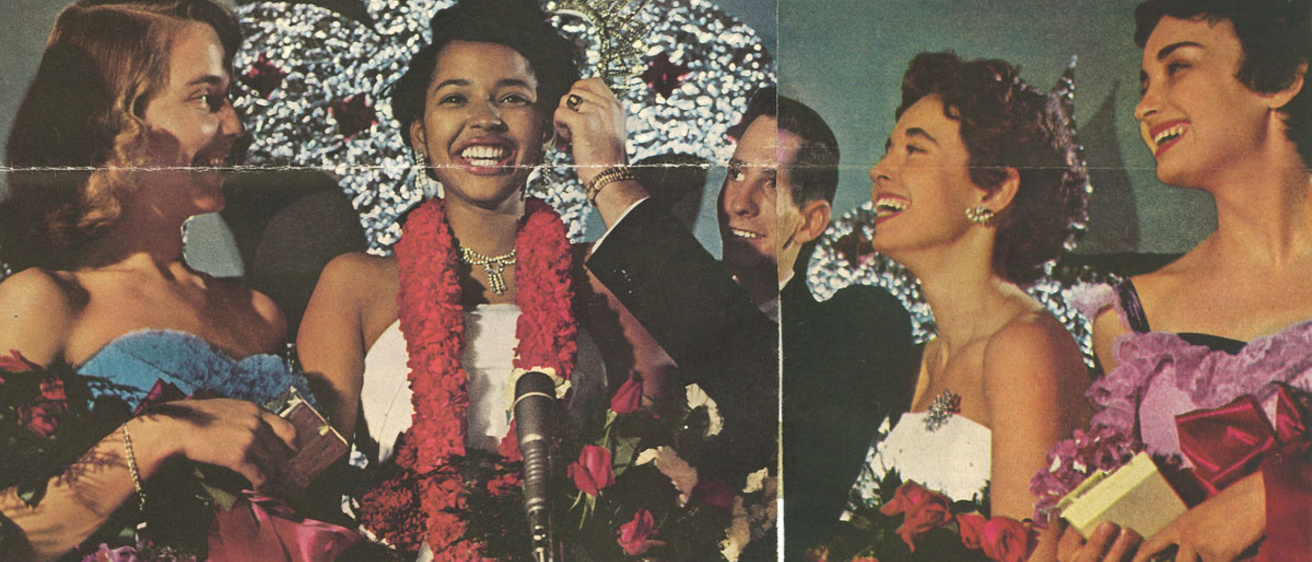Editor’s note: The Old Gold series provides a look at University of Iowa history and tradition through materials housed in University Archives, Department of Special Collections, University of Iowa Libraries.
Michael and Lena Hill’s book, Invisible Hawkeyes, reveals much about African American student life at the State University of Iowa in the early to mid-20th century. Michael, UI associate professor of English, and Lena, UI associate professor of English and African American studies, have assembled a narrative that helps us understand more fully the experiences of black students at a predominantly white Midwestern public university at the time.
Released in 2016 by University of Iowa Press, Invisible Hawkeyes inspires an exhibit by the same name in the Main Library Gallery. The exhibit is up until March 11, 2018. Items on display include original theses, theater scripts, photographs, and more. The exhibit recounts the experiences and intellectual contributions of students who, in many instances, came to Iowa because they were denied such opportunities elsewhere.

In 1940, for example, the State University of Iowa was the first university in the nation to confer the Master of Fine Arts degree. That year, three such degrees were awarded, including one to Elizabeth Catlett (1915–2012), for her work, “Sculpture in Stone: Negro Mother and Child.” Her thesis, currently on display, includes preliminary sketches of what she envisioned, a sculpture for which Catlett won first prize at the American Negro Exposition in Chicago in 1940.
Other notable African American students are mentioned as well. Dora Martin Berry was crowned as the first black “Miss SUI” in 1955, a reign that went unrecognized by the university administration until a formal apology was presented by President Bruce Harreld during her visit to campus in 2016. “It was really quite a moving moment,” she told The Daily Iowan at the time. “He was clearly expressing (the apology) with great sincerity. He meant what he was saying from the heart.”
In addition to the Main Library Gallery exhibit, a related display currently on the library’s third floor features the scrapbook of P.C. Robinson, a student from St. Louis who graduated from Iowa with a Bachelor of Science in chemistry in 1927. Photographs in the scrapbook offer a rare glimpse into African American student life on campus in the 1920s.
The book and complementing exhibit shed much light on a relatively unknown but significant aspect of UI history. If you are in the Iowa City area between now and early March, Old Gold invites you to visit the Main Library to experience the displays. Learn more about the Hills’ book, too, at www.uipress.uiowa.edu/books/2016-fall/invisible-hawkeyes.htm.

